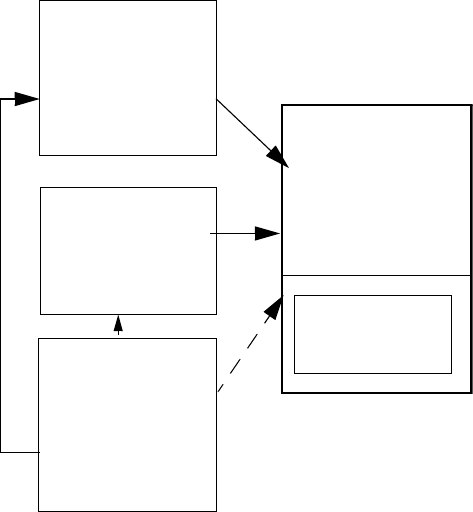HP CIFS Server Administrator Guide Version A.03.01.03 (5900-2006, October 2011)
Table Of Contents
- HP CIFS Server Administrator Guide Version A.03.01.03
- Contents
- About this document
- 1 Introduction to the HP CIFS Server
- 2 Installing and configuring HP CIFS Server
- HP CIFS Server requirements and limitations
- Step 1: Installing HP CIFS Server software
- Step 2: Running the configuration script
- Step 3: Modify the configuration
- Step 4: Starting HP CIFS Server
- Other Samba configuration issues
- 3 Managing HP-UX file access permissions from Windows NT/XP/2000/Vista/Windows 7
- Introduction
- UNIX file permissions and POSIX ACLs
- Using the Windows NT Explorer GUI to create ACLs
- Using the Windows Vista Explorer GUI to create ACLs
- POSIX ACLs and Windows 2000, Windows XP, Windows Vista, and Windows 7 clients
- HP CIFS Server Directory ACLs and Windows 2000, Windows XP, Windows Vista, and Windows 7 clients
- In conclusion
- 4 Windows style domains
- Introduction
- Configure HP CIFS Server as a PDC
- Configure HP CIFS Server as a BDC
- Domain member server
- Create the Machine Trust Accounts
- Configure domain users
- Join a Windows client to a Samba domain
- Roaming profiles
- Configuring user logon scripts
- Home drive mapping support
- Trust relationships
- 5 Windows 2003 and Windows 2008 domains
- 6 LDAP integration support
- Overview
- Network environments
- Summary of installing and configuring
- Installing and configuring your Directory Server
- Installing LDAP-UX Client Services on an HP CIFS Server
- Configuring the LDAP-UX Client Services
- Enabling Secure Sockets Layer (SSL)
- Extending the Samba subschema into your Directory Server
- Migrating your data to the Directory Server
- Configuring the HP CIFS Server
- Creating Samba users in directory
- Management tools
- 7 Winbind support
- 8 Kerberos support
- 9 HP CIFS deployment models
- Introduction
- Samba Domain Model
- Windows Domain Model
- Unified Domain Model
- 10 Securing HP CIFS Server
- 11 Configuring HA HP CIFS
- 12 HP-UX configuration for HP CIFS
- 13 Tool reference
- Glossary
- Index

HP CIFS acting as the member server
To ensure that there are always sufficient domain controllers to handle authentication and logon
requests, in general, configure BDCs rather than member servers unless there are fewer than about
30 Windows clients per BDC.
You can join an HP CIFS Server to the Samba Domain. The Windows authentication requests are
managed by the PDC or BDCs using LDAP, smbpasswd or other backend. For detailed information
on how to join an HP CIFS Server to the Samba Domain, see “Domain member server” (page 57)
in Chapter 4.
The member server smb.conf configuration differs from that of the PDC and BDC. You must set
the security parameter to domain. This forces the member server to authenticate via the PDC
or BDCs. You must set the password server parameter to the names of the PDC and may also
add the names of one or more BDCs. Set the domain master parameter to no to let the PDC
take control. As with the PDC and BDC, you set the passdb backend parameter to the name of
LDAP server to centralize POSIX and Windows account database management. Using LDAP requires
to install the HP LDAP-UX Integration software and configures the LDAP client to consolidate POSIX
and Windows users on the LDAP directory.
An example of the Samba Domain Model
Figure 9-5 shows an example of the Samba Domain Model which has HP CIFS Server machine
hostW and IP address 1.13.115.226 acting as a PDC and WINs server, HP CIFS Server machine
hostB and IP address 1.13.117.248 acting as a BDC, and Netscape Directory Server machine
hptem128.
Figure 27 An example of the Samba Domain Model
IP address
HP CIFS
NDS LDAP
Server
Windows
and UNIX
users
HP CIFS
PDC and
WINs Server
“hostW”
“1.13.115.226”
HP CIFS
BDC
“hostB”
IP address
“1.13.117.248”
Member
Server
“hostC”
IP address
“1.13.117.226”
“hptem128”
IP address
“1.13.114.99”
password backend:
ldapsam
smbpasswd
A sample smb.conf file for a PDC
The following is a sample Samba configuration File, /etc/smb.conf, used for an HP CIFS Server
machine hostW acting as a PDC in the sample Samba Domain Model shown in Figure 9-5:
118 HP CIFS deployment models










